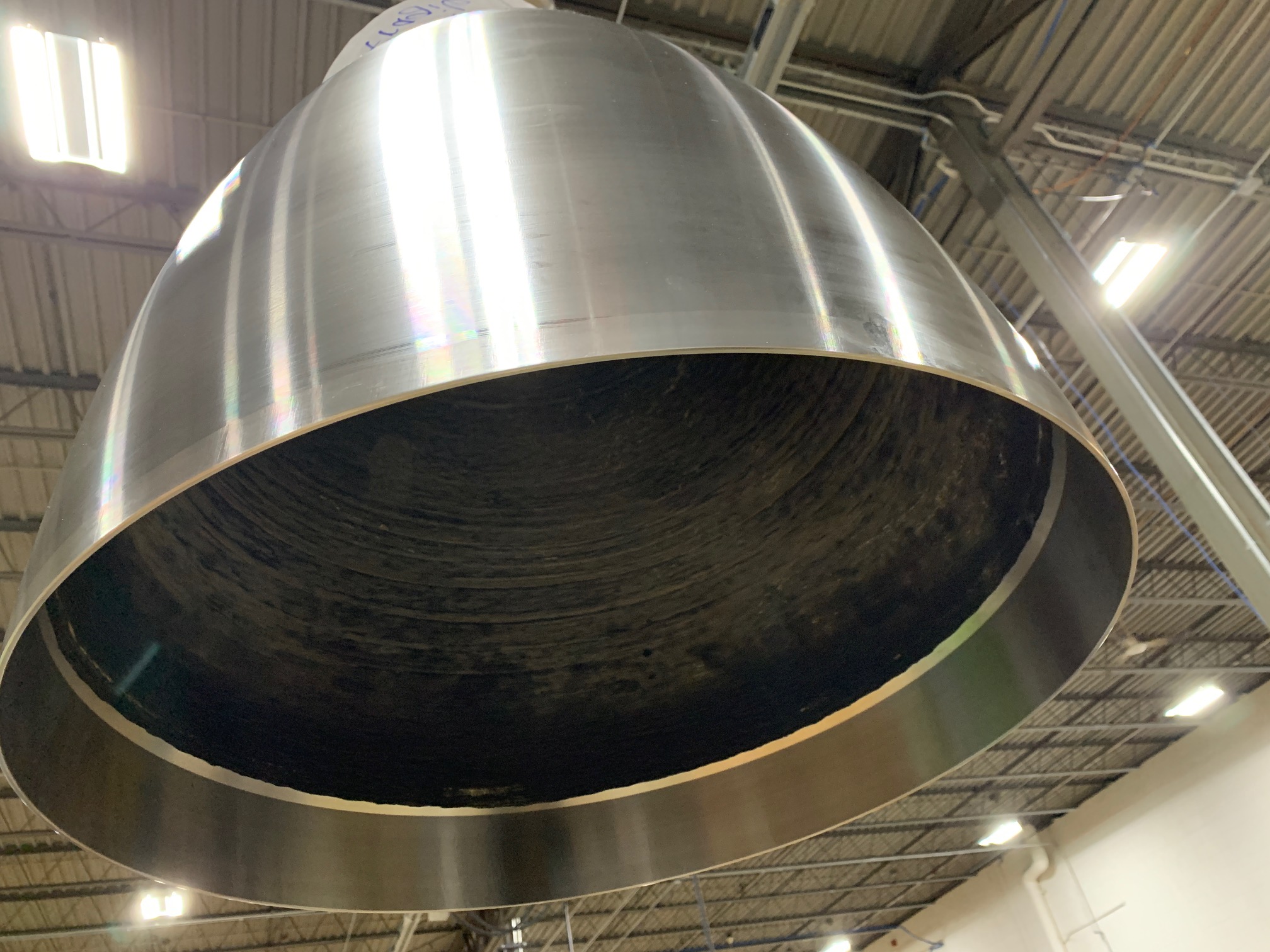ADDere, the additive manufacturing division of Wisconsin-based Midwest Engineered Systems, has used 3D printing to produce a full-size rocket thrust chamber assembly. Utilizing its Laser Wire Additive Manufacturing (LWAM) technology, ADDere was able to seamlessly merge the combustion chamber and nozzle components into one fully integrated product.
“It’s so rare that we get to show some of the capabilities we have, especially one that has gone through finish machining,” said Scott Woida, President of ADDere, “I think it gives a new perspective to what is possible with the technology.”

ADDere’s Laser Wire Additive Manufacturing Technology
ADDere, which produces industrial parts for the aerospace and trucking industries, began offering its 3D printing services in February last year. The company swiftly demonstrated the applications of its additive welding technology with the production of a 5ft 11in stainless steel turbine blade. The blade, weighing 135lbs, was produced in one single 30-hour run and has a height tolerance within 0.5mm of its design specifications.
The company’s latest large scale part, a fully unified rocket combustion chamber and nozzle, measures 1070 mm (42”) in height and 610 mm (24.0”) in diameter. Printed using stainless steel, the part consists of a thrust chamber body with a 3 mm sidewall, and a thicker-walled combustion chamber portion. ADDere’s Laser Wire Additive Manufacturing process allows for a seamless transition between engine components, and its control system ensures that the part is built in one continuous piece, without affecting the metallurgical quality of the metal.
By using a single method of production, and integrating components instead of combining different production processes, the part count is reduced and so is the risk of part failures. Producing large scale components also makes it possible to create more advanced shapes, and prevents manufacturers from needing to rely on large production quantities to drive prices down.
“I think a lot of people only see the straight-from-the-printer parts we show but miss the potential of the process that’s unveiled after finish machining,” said Pete Gratschmayr, VP of Sales at ADDere. “It’s the savvy engineer who’s got their fingers on the pulse of what’s next that truly understands the potential [of the technology].”
Additive welding to create large scale parts
Elsewhere, a joint research project named FAB-Weld was launched to research the merits of welding additive manufactured parts to create individualized series components. Funded by the Bavarian Research Foundation, the three-year project is being conducted in response to the demand for large-format SLS 3D printed components.
FAB Weld is considering joining together customer-specific SLS components and standard injection molding parts, as well as SLS parts with other SLS modules. While this would achieve large-volume parts, it would require a high-strength media-impermeable connection.
The nominations for the 2020 3D Printing Industry Awards are now open. Who do you think should make the shortlists for this year’s show? Have your say now.
Subscribe to the 3D Printing Industry newsletter for the latest news in additive manufacturing. You can also stay connected by following us on Twitter and liking us on Facebook.
Looking for a career in additive manufacturing? Visit 3D Printing Jobs for a selection of roles in the industry.
Featured image shows the ADDere Laser Wire Additive Manufacturing system at work. Photo via MWES.



